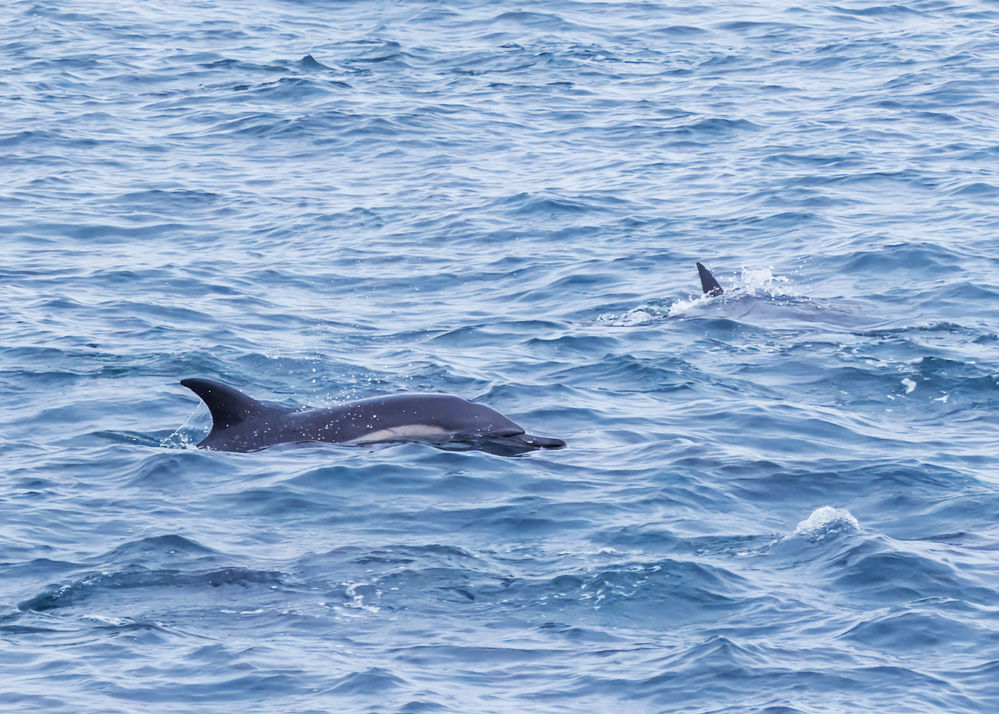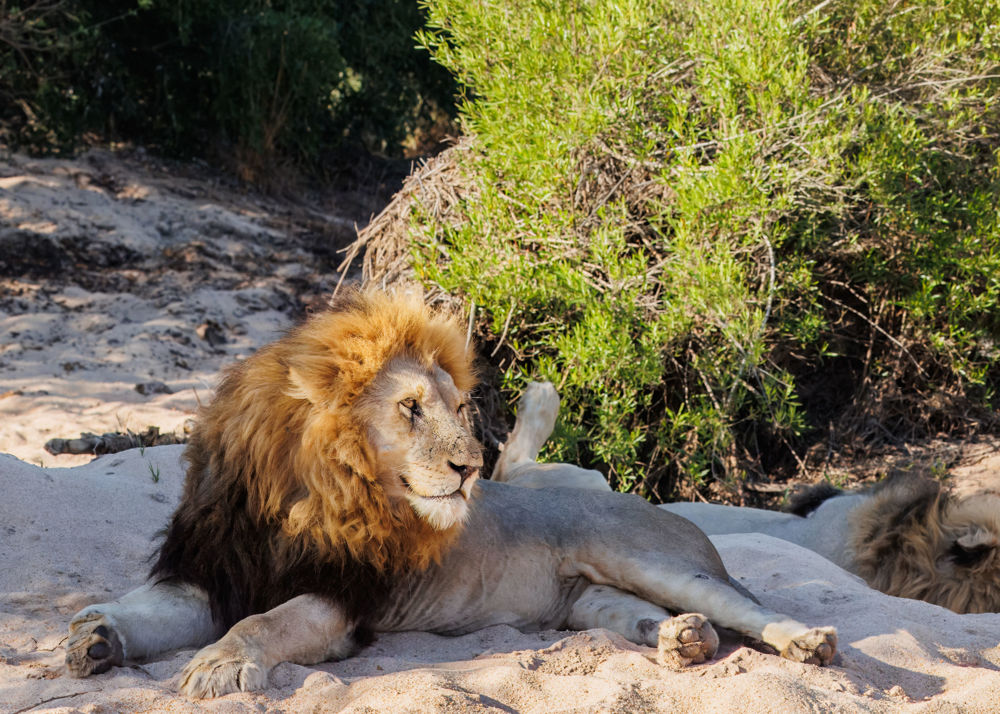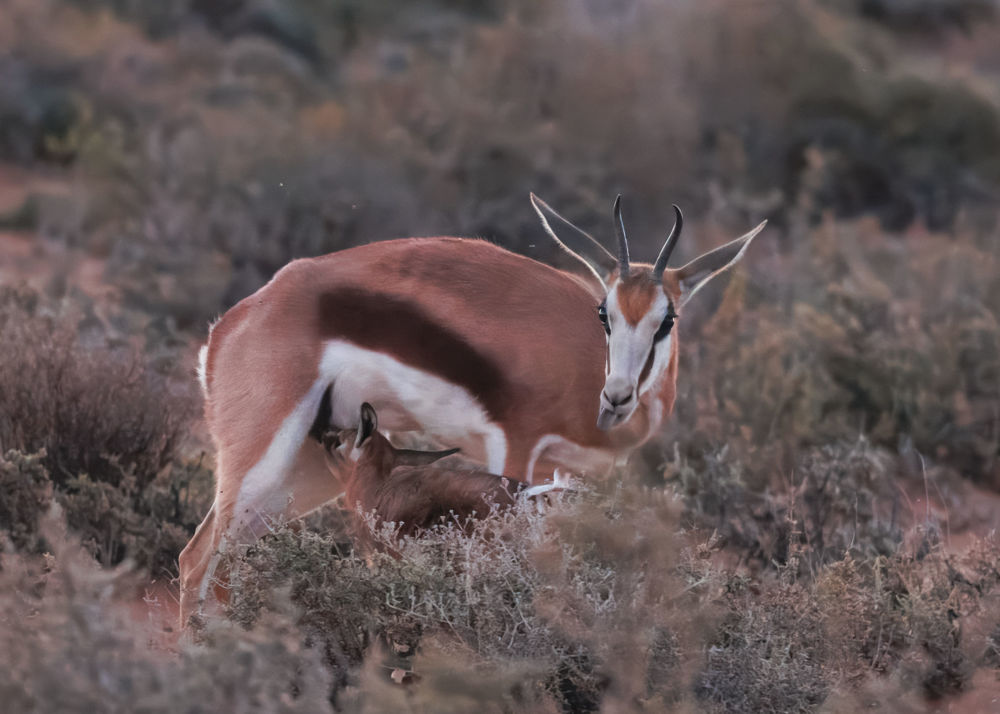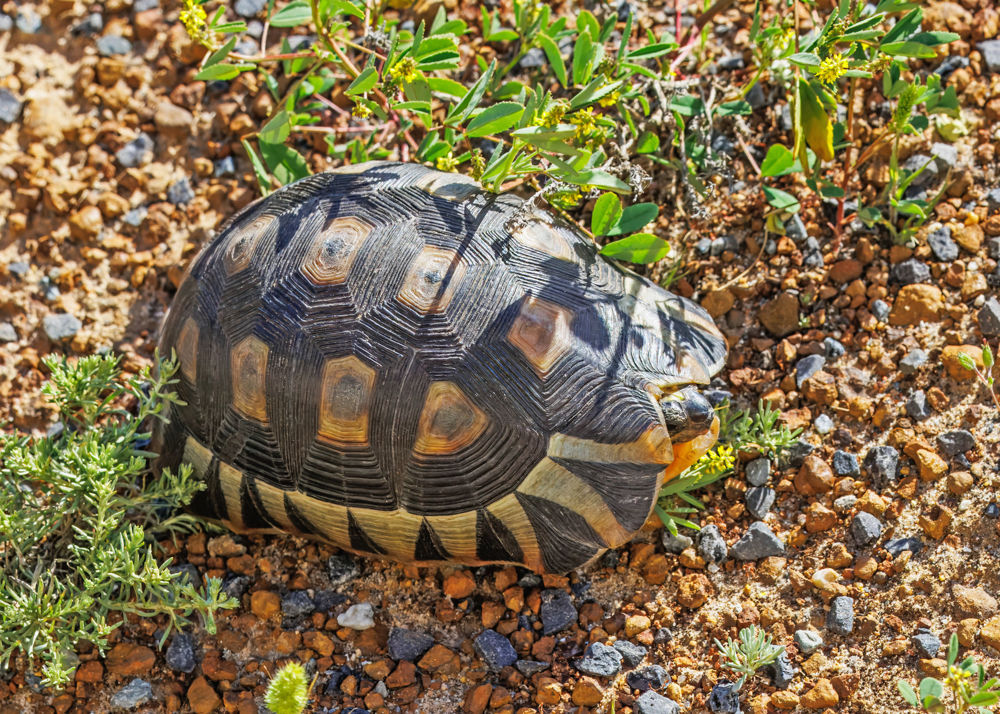Departure Date: September 19 - October 4, 2025
Compiled By: Geoff Lockwood
Trip Leaders: Geoff Lockwood
Toll Free: 800.328.8368
Phone: 512.328.5221
South Africa: The Southwestern Cape & Kruger 9/19/2025-10/4/2025

From dolphins and great whales to elephants and rhinos; from Lions, Leopards, and Wild Dogs to Dwarf Mongoose; from albatrosses and storks to warblers and penduline-tits; and from rollers and bushshrikes to cisticolas, this tour offered something for everyone!
As usual, we kicked off the tour in the spectacular Kirstenbosch Botanical Gardens, entering via the Rycroft gate and meandering down between the various plant beds towards the main entrance. Our stroll gave us a wonderful introduction to the incredible diversity of the Fynbos, the most diverse floral kingdom on the planet. The proteas, restios, and ericas (or heaths) in the different beds provided a colorful background for a succession of endemic birds—all new for the group: Cape Bulbuls, Southern Boubous, Southern Double-collared Sunbirds, Cape Sugarbirds, Karoo Prinias, and Forest Canaries were quickly added, along with Amethyst and Malachite sunbirds and a number of other more widespread bird species—all in the most spectacular setting imaginable! By the time we left, we had recorded thirty-three bird species and added our first mammal, a Four-striped Grass Mouse, to our lists.

Pagoda Flower (Mimetes cucullatus), Kirstenbosch © Geoff Lockwood
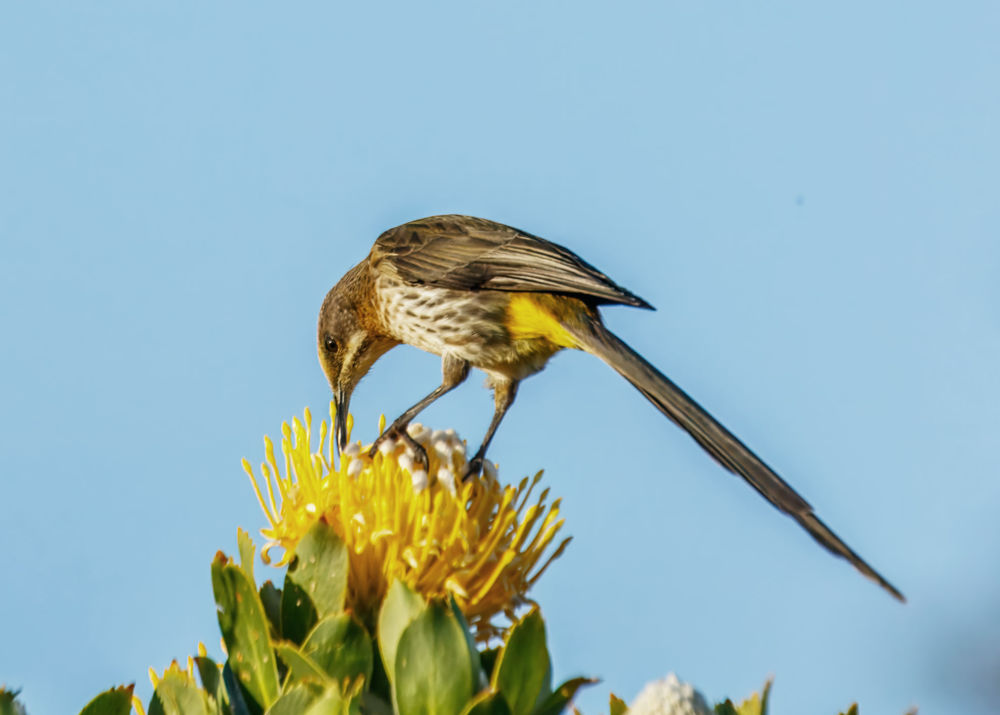
Cape Sugarbird, Kirstenbosch © Geoff Lockwood
On to the Cape of Good Hope Nature Reserve, where conditions were not ideal! The skies were overcast, a strong northerly wind was blowing, and most wildlife was sheltering out of sight. We did, however, find a solitary Bontebok—a strikingly pied antelope endemic to the Cape, plus a family of Common Ostriches at Olifantsbos. There was also the customary group of Cape Fur Seals on the rocks at the Cape of Good Hope, along with rows of Cape Cormorants plus the odd Cape Gannet whipping past offshore. There were also several more ostriches—incongruously back-dropped by the angry seas, feeding next to the road. For many, the day’s birding highlight came at our next stop—Boulders Beach, Simonstown—on our way back to the hotel. We were on the footpath above the rocks, enjoying great, close views of African Penguins and Cape Rock Hyrax, when a couple of penguins came waddling down the path towards us. They stopped only feet away, seemingly glaring at the different sets of shoes in their way. The status of the African Penguin has recently been re-assessed as critically endangered, and this encounter ended the day on a bittersweet note.
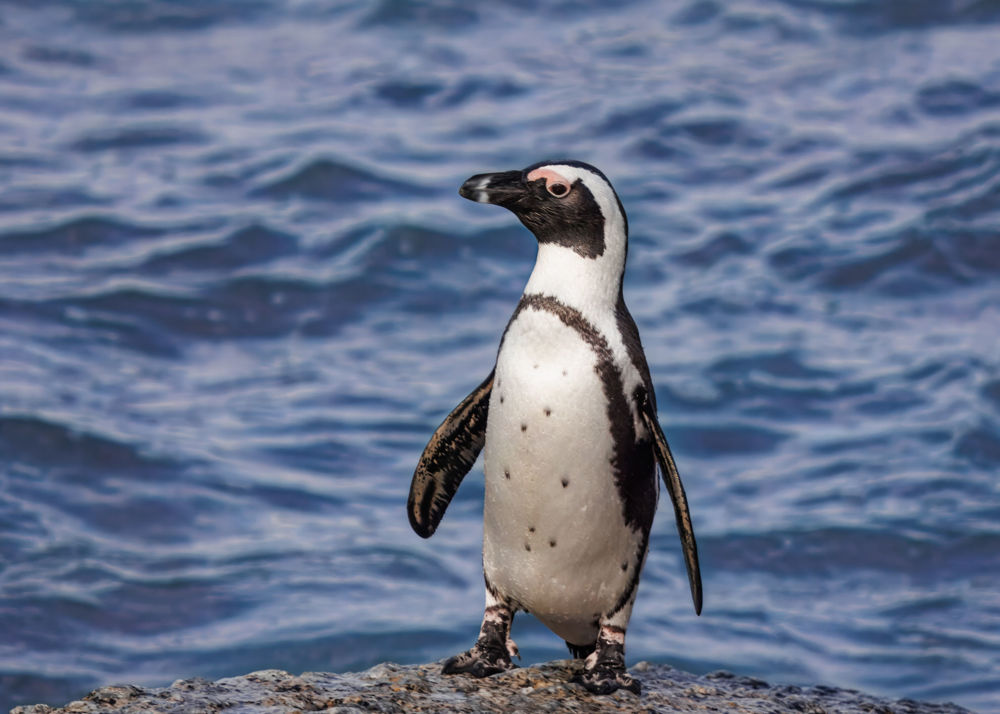
African Penguin, Boulders colony, Simonstown © Geoff Lockwood
After a two-year break, we were again able to experience pelagic birding in the Cape’s stormy waters, traveling out over forty miles to the trawling grounds where we joined one of the trawlers as it was processing its catch. Thousands of albatrosses, petrels, and gulls were wheeling in a feeding frenzy behind the ship, birds landing briefly to gobble down scraps before flying off to rejoin the melee behind the trawler. The number of birds was overwhelming, and getting on to the odd Wilson’s Storm-Petrel or Sabine’s Gull in the chaos proved challenging, but we all had great views of White-capped, Black-browed, and Indian Yellow-nosed albatrosses, and Cape (or Pintado), Soft-plumaged, and Northern Giant petrels, as well as Sooty Shearwaters.
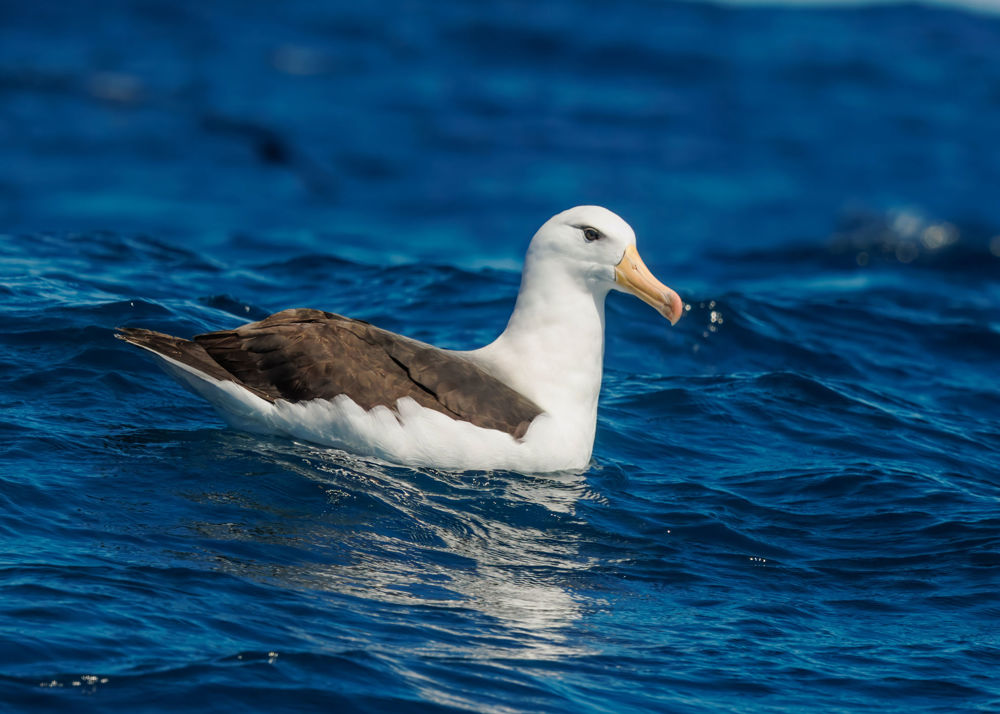
Black-browed Albatross, pelagic trip offshore © Geoff Lockwood
The spiny Renosterveld (Rhino-bush) of the West Coast National Park was buzzing during our visit, with Bokmakierie, White-throated and Yellow canaries, Karoo Scrub-Robins, White-backed Mousebirds, and Chestnut-vented Warblers among the new birds recorded during our stay. Highlights were several great views of the spectacular endemic Black Harriers hunting over the scrub, and an ultra-close view of a female Black Bustard walking through the flowers with a young chick—a first on these tours. The park is also famous, or notorious, for its high densities of venomous snakes, and we had a brief view of a large Puffadder on the edge of the road.

Puffadder, West Coast National Park © Geoff Lockwood
The drive to the Karoo took us through wheat fields, vineyards, and spectacular mountain scenery, and as we drove through the last pass out into the vast semiarid interior, we had the first of a number of great birds—a Pale Chanting-Goshawk perched on a power pole next to the vehicle. Our luck continued on our drives around Inverdoorn, with a steady stream of Karoo ‘specials’ appearing in the low scrub on our route. Rufous-eared Warbler, Fairy Flycatcher, Namaqua Warbler, Karoo Chat, Karoo Lark, Gray Tit, Booted Eagle and, often the trickiest, a single Karoo Eremomela, were all tracked down.Inverdoorn runs a Cheetah rehabilitation program, and a visit to the enclosures on our first morning allowed us to appreciate the incredible acceleration and speed of these ‘spotted sphynxes’ as they chased after a rapidly retrieved lure in a training exercise.
Our whale-watching boat trip in Walker Bay, Hermanus was spectacular, with encounters with a group of over four hundred Common Dolphins that suddenly appeared around our boat, leaping effortlessly out of the water and surfing the bow waves of our twin hulls. We could see them through the water, just below the surface and almost close enough to touch! What an incredible experience—and a first on these tours. Next came a small pod of Atlantic Bottlenose Dolphins heading steadily out to sea, followed by three different Southern Right Whale cows with their well-grown calves. Continuing around the coast to Cape Town, we stopped at Stoney Point in Betty’s Bay for more close views of African Penguins, as well as Bank Cormorant—the last of southern Africa’s endemic cormorant species.
At Rooi Els, our priority target was Cape Rockjumper, perhaps the most iconic of all the fynbos specials, along with Cape Rock-Thrush, Cape Siskin, and Orange-breasted Sunbirds. We managed to pick up the sunbird and the rock-thrush fairly easily, but the rocky slopes above the track were silent and devoid of movement. After a long wait, we moved further along the track—but still no sign of the birds! I was starting to think that we might miss them and had started heading back when a male called briefly from a pile of rocks, and then disappeared. As I tried to get the group focused on the correct rock pile, the female appeared in the same area and proceeded to give everyone great scope views as she foraged along the foot-slope. Phew . . . but what an awesome bird to wrap up our time in the Cape.
Our flight to Skukuza in the Greater Kruger Park was somewhat delayed, and for much of our route across to the eastern side of the country, the ground was totally obscured by clouds. The rains had finally arrived! When we emerged from the clouds, a new world was laid out below us. Still-dry grasses and leafless trees were a stark contrast to the vibrant greens of the Cape, and the two rivers visible were reduced to shallow pools, but the bushveld was coming alive after the rain, and birds were everywhere. By the time we reached camp, we had added two new starlings, our first hornbill, and our first Wahlberg’s Eagle, and had also seen a Spotted Hyena, giraffe, and impala. A pre-breakfast walk in camp the next morning brought a succession of brightly-colored new birds—turacos, hornbills, hoopoes, robin-chats, flycatchers, and sunbirds were quickly filling the gaps in field checklists. The fun continued on a short game-drive, adding our first storks, and also a stunning Martial Eagle. Birds were everywhere, and we were struggling to keep pace with all the new birds . . . and we still had Nyati Lodge in the Sabi Sands to look forward to!
Our transfer to the lodge gave us magnificent views of a White (or Square-lipped) Rhinoceros bull, followed by great views of a cow with a very young calf. We were definitely in big game country! After settling in, we headed out on our first game drive, steadily clocking up new bushveld birds en route. After sunset, our tracker used a red-filtered spotlight to search for nocturnal species, giving us brief views of a Common Genet, and then a delightful Pearl-spotted Owlet just in front of the vehicle. We were heading for a Lion sighting, and when we arrived we found an adult lioness and her two well-grown daughters feeding on the hindquarters of a downed African Buffalo bull. The prey was still alive, and every now and then it lifted its head and bellowed. Africa, red in tooth and claw, is not for the squeamish! We went to sleep to the sound of roaring Lions!
The pattern for our stay started with an early wake-up, a light breakfast, and a morning game drive followed by a substantial brunch and then down-time in camp. We met again at 3:30 pm for tea and then headed out again for a drive, returning after dark for dinner. We were not only racking up new birds, but the mammal sightings were spectacular: a pack of Wild Dogs with the remains of their kill; the clean-up crew of a Hooded Vulture feeding on the morsels of flesh the dogs had left; and then a solitary young Spotted Hyena that walked and stole what was left.

Wild Dog, Sabi Sands © Geoff Lockwood
The area around Nyati has a very healthy Leopard population, and that evening, as we were dining under the stars in the boma, Gabriel, our guide, came rushing in. “Do you want to see a Leopard?” Silly question! We all rushed after him, arriving just in time to see a beautiful female Leopard investigating the door to one of the rooms. WOW! We were not done with Leopards, however!
On the next afternoon drive we headed for the western boundary of the reserve looking for a male Leopard known as Ravenscourt. On the tour two years ago, this magnificent cat had walked out through an arch only 25 yards from where we were gathering for tea. He had glanced at us, then turned and nonchalantly walked up the path past reception—with us following excitedly behind. Then, he had been the dominant male in the area, but since then he has lost two massive fights against younger, fitter males and has been kicked out of his territory. As we watched this superb animal lit by the setting sun, and lying only yards from our vehicle, I was thinking . . . will this be the last time?
The group was somewhat subdued on our transfer back to Skukuza for our flight to Johannesburg and the end of the main tour. Our stay at Nyati had been incredible, and we were all sad to leave. The Sabi Sands Reserve had one more surprise for us. Just before we reached the exit, I noticed a Crowned Lapwing acting strangely. We stopped, backed up, and found the bird frantically trying to rid itself of a snake—a small Common Egg-eater that had somehow wrapped its tail around the terrified bird’s neck. We will never know how they got themselves into this situation, or how it finally ended, but this exceptional and unique sighting wrapped up a truly memorable tour!
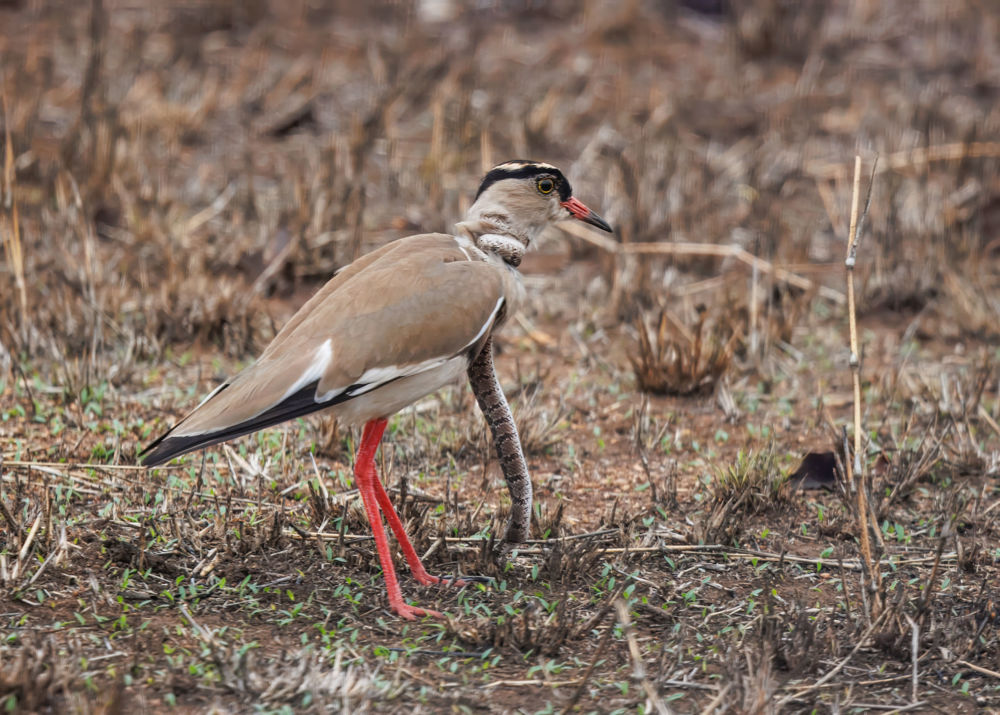
Crowned Lapwing with a Common Egg-eater, Sabi Sands © Geoff Lockwood
A complete list of the birds recorded on our tour can be found at: https://ebird.org/tripreport/414185
Description for the next departure of this tour.
Geoff Lockwood's upcoming tour schedule.
ITINERARY:
Day 1: September 21, 2025 - Kirstenbosch National Botanical Garden; Cape of Good Hope Nature Reserve and Boulders penguin colony, Simonstown.
Day 2: September 22, 2025 - Pelagic trip to the trawling grounds.
Day 3: September 23, 2025 - Drive to Langebaan via Tinie Versveld Wildflower Reserve and the West Coast National Park.
Day 4: September 24.org, 2025 - West Coast National Park.
Day 5: September 25, 2025 – Drive to Inverdoorn in the Tankwa Karoo via Ceres and Karoopoort; evening game drive.
Day 6: September 26, 2025 – Game drives and walk on Inverdoorn; birding around the lodge.
Day 7: September 27, 2025 – Early game drive; drive through to Hermanus.
Day 8: September 28, 2025 – Whale-watching boat tour; drive through to Cape Town via Stoney Point and Rooi Els.
Day 9: September 29, 2025 – Flight to Skukuza; afternoon game drive.
Day 10: September 30, 2025 – Morning birding around camp, game drive and transfer to Nyati; evening game drive.
Day 11: October 1, 2025 - Morning and evening game drives; birding in camp.
Day 12: October 2, 2025 – Morning and evening game drives; birding in camp.
Day 13: October 3, 2025 – Early morning game drive; transfer to Skukuza Airport for flights to Johannesburg.
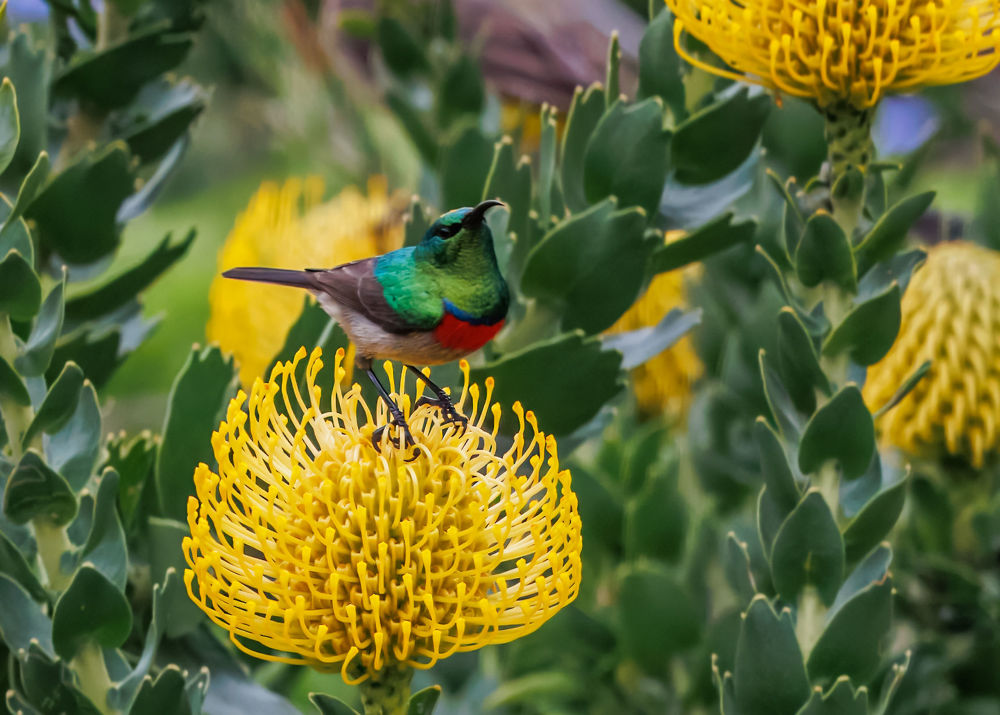
Southern Double-collared Sunbird male, Kirstenbosch © Geoff Lockwood

